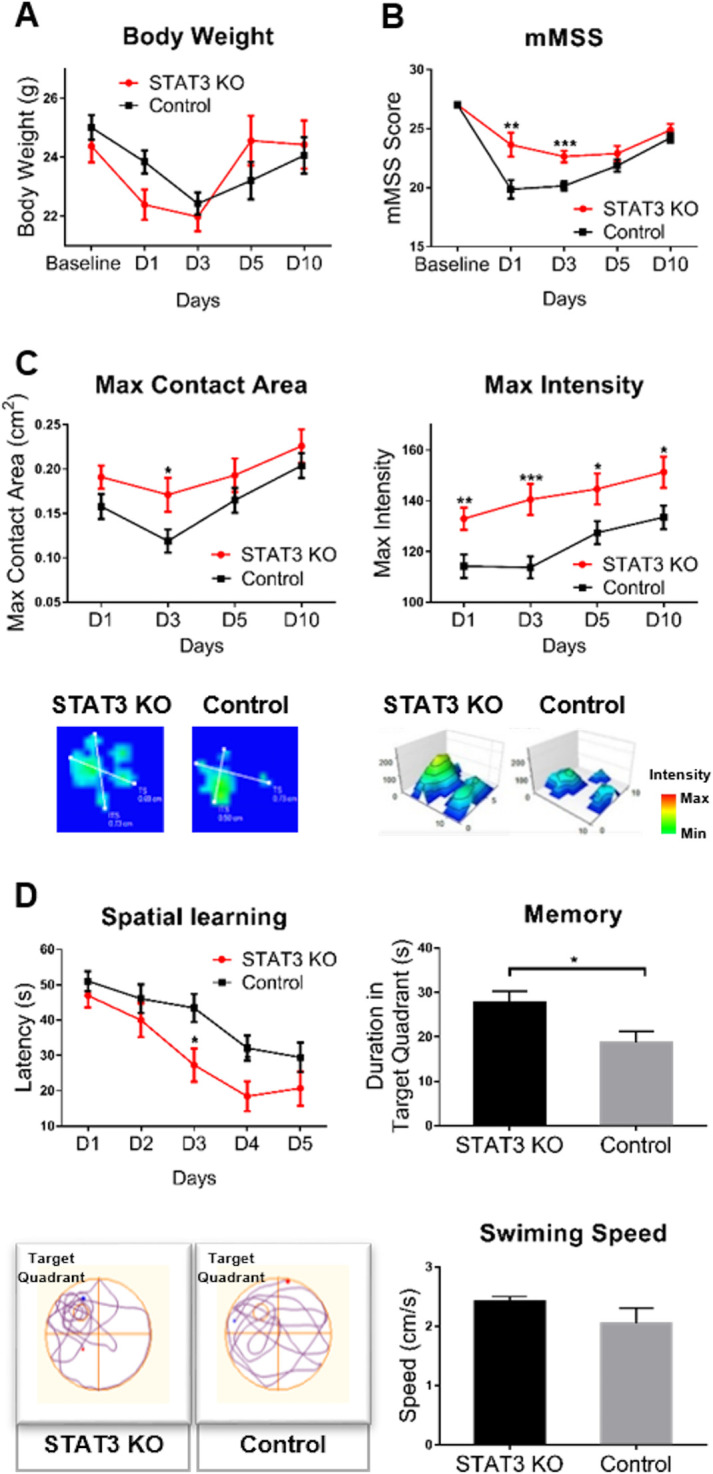Figure 3.

Microglial STAT3 deletion ameliorated the neurological impairment after SAH. (A) The time-course body weight changes were examined in STAT3 KO and control groups of mice. (B)The sensorimotor functions were assessed by the mMSS (5–27 scores). (C) Gait analysis was performed by the Catwalk system. The max contact area (CM2) and max intensity of paw were detected. STAT3 KO mice showed the alleviated paw contraction and increased paw intensity compared with the control. (D) Cognitive functions including learning ability and memory were assessed by the MWM test. Spatial learning ability was defined as the latency to escape the platform. Memory was defined as the time mice spent in the target quadrant where the platform was placed previously. The bottom figure shows the typical swim path and average swimming speed of STAT3 KO and control groups of mice. n=8–16 per group. Values are mean±SEM. *P≤0.05, **P≤0.01, ***P≤0.001. KO, knockout; mMSS, Mouse Motor and Sensory Scale; MWM, Morris water maze; SAH, subarachnoid haemorrhage; STAT3, signal transducer and activator of transcription 3.
